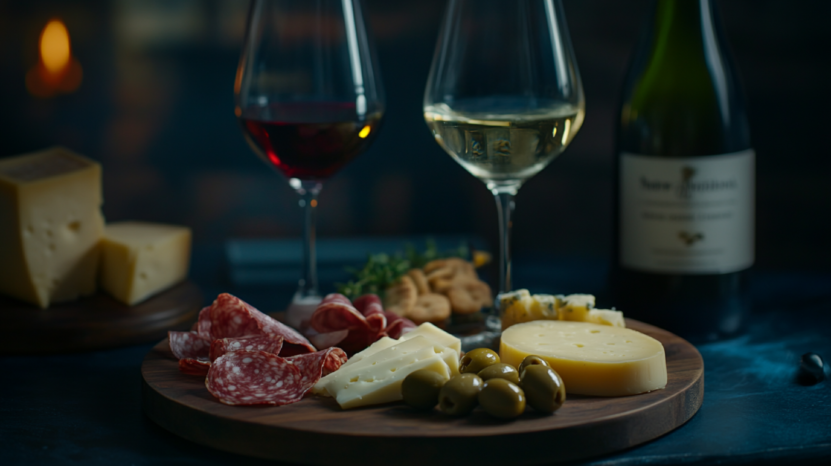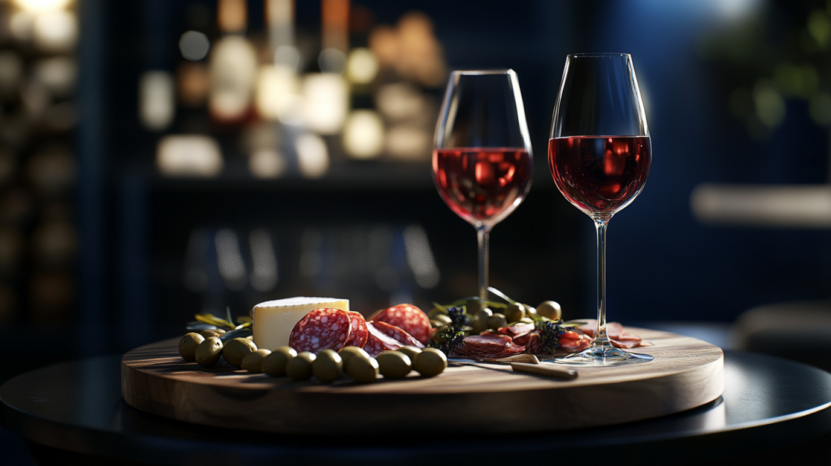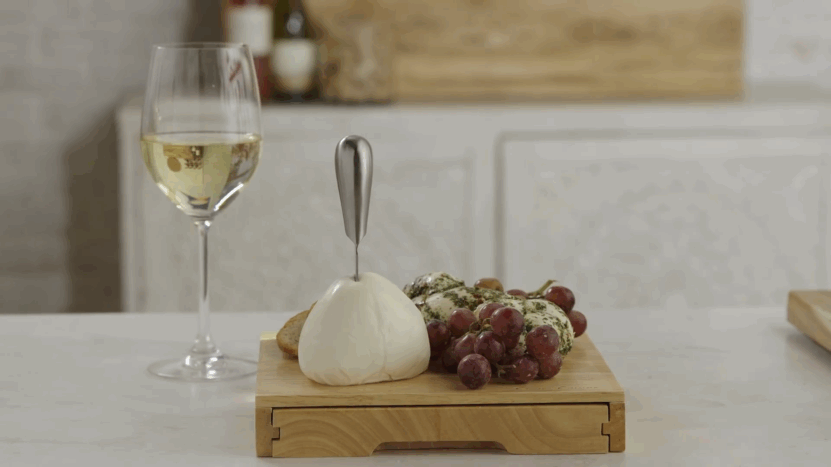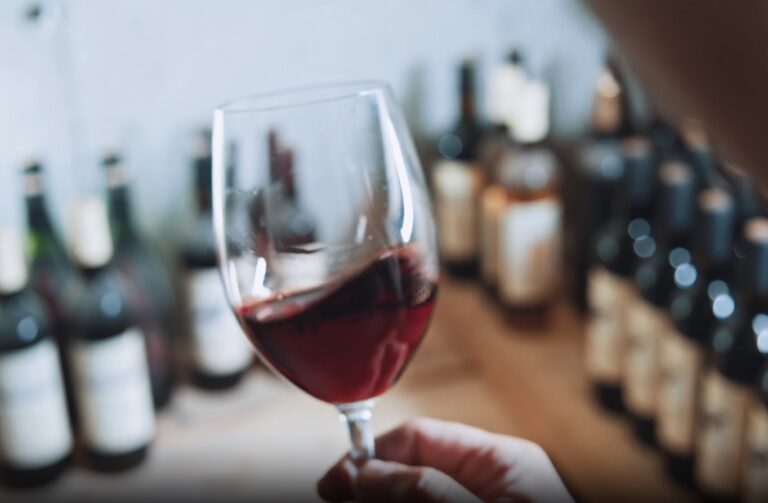
When I plan a night with friends or family, I always pull together a platter with olives, cheeses, and cured meats.
Over the years, I’ve learned that having the right wine makes all the difference, but it doesn’t have to be expensive.
I’ve tested plenty of affordable wines—usually under $20—that not only complement these foods but actually elevate them.
Why Pair Wine with Olives, Cheeses, and Cured Meats?

When I started experimenting with wine pairings, I quickly learned that different snacks bring their own challenges.
Olives are salty and briny, cheese ranges from creamy to hard and tangy, and cured meats can be fatty and spiced. If the wine isn’t right, it can clash with those flavors.
But the good news is that certain wines, even affordable ones, can balance those intense tastes. It’s about matching the wine’s acidity, fruitiness, body, and tannin level to the snack’s profile.
The Wines I Pick for Olives
Olives, especially when marinated or stuffed, pack a lot of salt and often a hint of bitterness. That means I need a wine that can cut through the salt and refresh my palate without being overpowered. I tend to stick to whites and fortified wines with a crisp, clean profile.
One of my top picks is Verdicchio from Italy, especially Verdicchio dei Castelli di Jesi. It has bright citrus notes, a touch of almond, and a dry, crisp finish that makes green and black olives taste more vibrant.
I also reach for Picpoul de Pinet from France, which is light-bodied and zesty with a sharp lemony kick.
It handles the brine and refreshes my palate between bites. For something unique, I open a bottle of Fino Sherry from Spain. This dry, fortified wine brings nutty and saline flavors that actually mirror the olive’s briny character, creating a perfect match.
Wine
Region
Flavor Profile
Best with
Price
Verdicchio dei Castelli di Jesi
Italy
Citrus, almond, dry
Green & black olives
~$14
Picpoul de Pinet
France
Lemon, crisp, mineral
Marinated olives
~$12
Fino Sherry
Spain
Nutty, saline, dry
All olives
~$16
The Wines I Use for Cheeses
Cheese is tricky because its texture and flavor vary so much. Hard cheeses like aged Cheddar or Manchego are salty and rich, while soft cheeses like Brie or Camembert are creamy and mild.
Blue cheeses or aged goat cheese bring tang and intensity. I choose wines based on the cheese type to keep things balanced.
For hard cheeses, I always reach for a Côtes du Rhône red. It’s fruit-forward with soft tannins and just enough acidity to balance the richness of the cheese.
For creamy cheeses like Brie, I love Chenin Blanc from South Africa or the Loire Valley. It has bright acidity, a touch of fruit, and enough freshness to cut through the creaminess.
When the cheese is tangy or strong—like blue cheese or sharp goat—I pop open a Prosecco from Italy. Its bubbles cleanse the palate, and its slight sweetness balances the funk.
Cured meats like prosciutto, salami, or chorizo bring salt, fat, and spice to the table. A good wine needs to have acidity to cut through the fat and enough flavor to stand up to the meat. I’ve found a few budget-friendly wines that hit that mark. For milder meats like prosciutto or salami, I love Montepulciano d’Abruzzo. It’s medium-bodied with juicy red fruit and soft tannins, perfect for handling salt and fat without overwhelming the meat. When I’m serving something spicier, like chorizo or jamón, I choose Garnacha (Grenache) from Spain. It’s vibrant, with red fruit and spice that match the intensity of the meat. For something a little different, I open a bottle of Lambrusco Secco from Italy. This dry, fizzy red has just enough acidity to refresh my palate, and its effervescence keeps things light when eating rich charcuterie. In Provence, Some Rosé Winemakers Are Embracing a New Style https://t.co/vPmSfdgfF4 — Society of Wine Educ (@wine_educators) May 6, 2025 There are times when I don’t want to open multiple bottles, especially for a casual gathering. In those cases, I pick a wine that can handle olives, cheeses, and cured meats all at once. My top choices are rosé from Provence or Spain, Cava from Spain, and Chianti from Italy. A dry rosé is fresh and light enough for olives but has enough fruit to stand up to cheeses and meats. Cava brings bubbles and acidity that refresh the palate with every bite. And Chianti offers medium-bodied red fruit and herbal notes that work well with everything on the platter. When I’m pairing wine with olives, I go for crisp whites or dry fortified wines. For cheese, I match hard varieties with medium-bodied reds, creamy cheeses with bright whites, and tangy ones with bubbly wines. Cured meats call for reds with good acidity and a bit of fruit. And when I want to keep it simple, I reach for a dry rosé, Cava, or Chianti. Sometimes I even design my own wine labels for fun, especially when I’m hosting—it’s a small detail, but it always gets a smile. These wines are affordable, easy to find, and they make a big difference in how the food tastes. They also keep my guests happy without blowing the budget. The right wine pairing turns a simple platter into a full-on experience.
Wine
Region
Flavor Profile
Cheese Type
Price
Côtes du Rhône Red
France
Red berries, spice
Hard cheeses
~$13
Chenin Blanc
South Africa
Bright, fresh, fruity
Soft & creamy cheeses
~$12
Prosecco
Italy
Crisp, lightly sweet, bubbly
Tangy or blue cheeses
~$15
The Wines I Go for with Cured Meats
Wine
Region
Flavor Profile
Cured Meat Type
Price
Montepulciano d’Abruzzo
Italy
Juicy, medium-bodied
Prosciutto, salami
~$12
Garnacha (Grenache)
Spain
Bright, red fruit, spice
Chorizo, jamón
~$10
Lambrusco Secco
Italy
Dry, fizzy, refreshing
Salami, mortadella
~$15
Wines I Rely on When I Want Just One Bottle
Wine
Region
Flavor Profile
Versatility
Price
Rosé
Provence or Spain
Dry, crisp, fruity
All snacks
~$12
Cava
Spain
Sparkling, dry, fresh
All snacks
~$13
Chianti
Italy
Medium-bodied, herbal, red fruit
All snacks
~$14
My Key Takeaways





